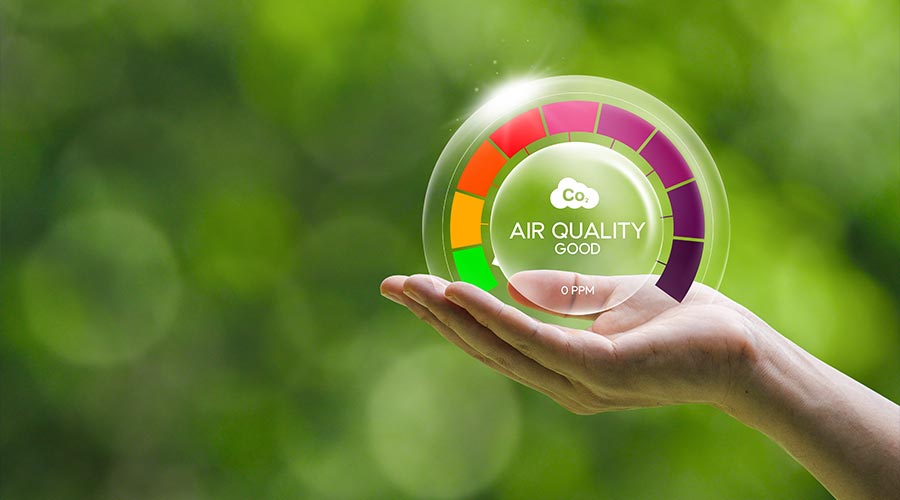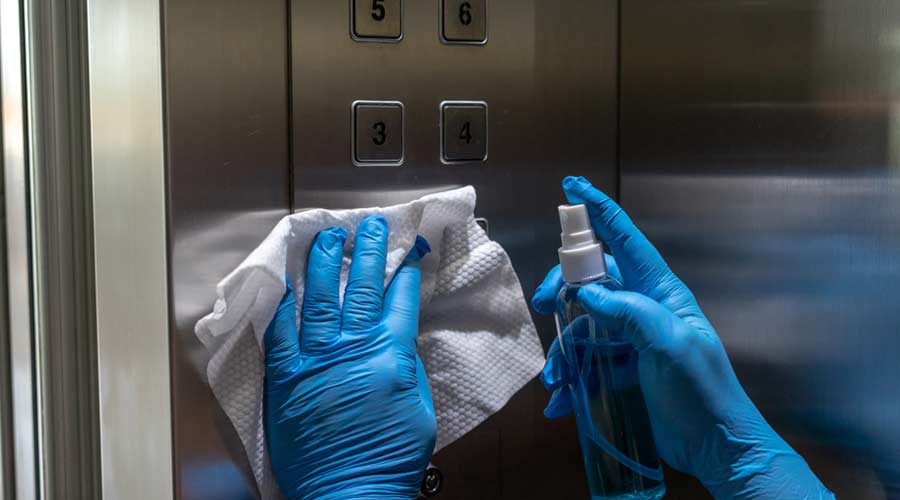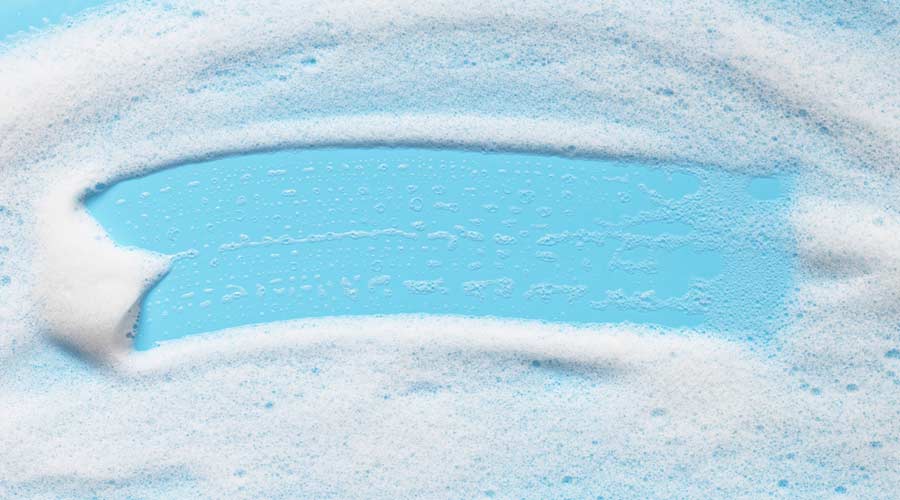
By Lauren Belskie
Whether managing a school, office, healthcare facility, commercial building, or simply maintaining a home, clean air is essential. Indoor air quality (IAQ) plays a critical role in the health, comfort, and safety of building occupants. It can even affect occupant productivity and performance.
It's a fact that individuals spend roughly 90 percent of their time indoors. As a result, IAQ impacts everyone.
Good indoor air quality goes beyond masking malodors. It encompasses the reduction of airborne pollutants like dust, allergens, bacteria, mold spores, and volatile organic compounds (VOCs) — many of which can trigger respiratory issues, discomfort, or illness. And while unpleasant odors are often the first sign that something’s off, addressing them isn’t just about making a space smell nice — it’s about ensuring that the air is actually clean, healthy, and safe to breathe.
That's why it’s important to understand tried and true methods to build an odor control program that is designed to enhance a facility’s IAQ. It includes everything from choosing the right products to implementing effective cleaning processes that make a real impact on the air the people in the building breathe.
Indoor air quality is the measurement of the amount of pollutants inside and around the outside of the facility. Yes, the air outside impacts indoor air quality as well. And, no, shutting the window often isn't enough.
The air outside of the facility contributes to the quality of air inside because ventilation systems allow air to pass into the building. If there are high levels of air pollution outside, the indoor pollutant levels will also likely be high.
Poor IAQ can have negative effects on the people inside the building. These effects include:
- Headaches
- Fatigue
- Dizziness
- Irritation of nose, throat, and eyes
- Respiratory disease
- Even heart disease or cancer in severe or long-term exposure cases
The effects of poor indoor air quality can be made worse due to age, pre-existing medical conditions, the amount of pollutants present, and repeated exposure. Some pollutants may cause varied reactions based on individual sensitivity and the kind of contaminants that are in the air.
How to Test IAQ
Before teams can improve the indoor air quality, they need to know where the facility stands. While cleaning professionals can often spot signs of poor IAQ — like lingering odors, excess dust, or occupant complaints — accurate testing requires the help of a professional.
IAQ testing involves measuring the concentration of various airborne pollutants, such as:
- Volatile Organic Compounds (VOCs)
- Carbon dioxide (CO2) and carbon monoxide (CO)
- Mold spores and allergens
- Particulate matter (PM2.5 and PM10)
- Temperature and humidity levels
- Airborne bacteria and viruses
This data is used to compare a facility’s air quality against established exposure limits set by organizations like OSHA (Occupational Safety and Health Administration) and NIOSH (National Institute for Occupational Safety and Health).
It’s important to work with trained professionals who have specialized equipment to accurately measure IAQ. Managers can use the EPA’s Indoor Air Quality Professional Finder to locate a certified IAQ technician in any given area. Unfortunately, an in-house team won’t be able to conduct this type of testing without the proper certifications and tools. However, there are some tools, like IAQ screening kits, for in-house use.
How Odor Control Affects IAQ
Oftentimes, foul smells or malodors are the first sign that something is compromising air quality. But it’s not enough to simply cover up unpleasant odors. To support healthy IAQ, facilities need to identify and eliminate the underlying causes of these smells.
Common culprits include:
- Restrooms and break rooms: Organic waste and food odors
- Cleaning chemicals: Harsh or misused products emit VOCs
- Dirty janitorial equipment: Vacuums and autoscrubbers can redistribute dust and bacteria if not maintained
- HVAC systems: Unclean ducts or filters reduce airflow and spread allergens
- Moisture and mold: Standing water or damp surfaces cause musty odors and respiratory triggers
It’s critical not to just mask these odors, but to eliminate them at the source. That’s where a well-rounded odor control program becomes a key component of the building’s overall indoor air quality strategy. A successful odor control program does more than make a space smell pleasant — it helps maintain a clean, healthy, and professional environment by actively supporting the facility’s IAQ.
A well-rounded odor control program typically includes:
- Source identification and removal (e.g., waste, moisture, organic matter)
- Use of odor neutralizers to eliminate smells at the molecular level
- Deployment of air fresheners to enhance the scent and perception of cleanliness
- Integration of air sanitizers to eliminate airborne germs and bacteria
- Proper placement of active and passive fragrance systems
- Ongoing maintenance and staff training to prevent reoccurring issues
Eliminating vs. Masking Odors
An effective odor control program begins by identifying and addressing the source of unpleasant smells — whether it's bacteria on restroom surfaces, mildew in a damp area, or food waste in a break room bin.
After resolving the root cause, use products that neutralize odors instead of simply layering fragrance on top. Masking alone can give a false sense of cleanliness and allow underlying issues to worsen. Solutions may include:
- Odor neutralizers that chemically bond with malodor molecules to eliminate them
- Air sanitizers that kill airborne germs and improve overall IAQ
- Enzyme-based cleaners to break down organic matter and odor-causing bacteria
To design a program that actually supports indoor air quality, it’s important to know the difference between these three key products:
Air Fresheners: These products are designed to improve the smell of a space by masking odors. They don’t kill germs or remove airborne pollutants, but they enhance the perceived cleanliness of a space.
There are two categories of air fresheners: passive and active.
Passive fresheners rely on natural airflow. A passive air freshener doesn’t need to be powered or managed and relies on natural air movement to dispense fragrance. They are great for smaller areas or as a complement to active ones. Examples of passive air fresheners include:
- Hanging Tags
- Reed Diffusers
- Toilet Bowl Clips
- Urinal Screens
- Gel Fresheners
Active fresheners use batteries or plugs to provide continuous fragrance and are perfect for large or high-traffic spaces like lobbies, restrooms, and conference rooms. Examples of active air fresheners include:
- Spray Air Fresheners
- Diffusers
- Nebulizers
- Fan Air Fresheners
Pro Tip: Use both types together to create a consistent, layered scent experience. For example, an active dispenser at the main hallway entrance paired with a passive unit in adjacent smaller rooms.
Air Sanitizers: Unlike air fresheners, air sanitizers kill bacteria, viruses, and mold spores that contribute to odors and poor IAQ. The most common examples of air sanitizers include sprays, foggers, and UV-light systems.
Odor Neutralizers: Odor neutralizers are specially formulated products that chemically or biologically break down odor-causing compounds at the source, eliminating them.
In the end, an effective odor control system is more than just ensuring the facility smells nice. It is about ensuring a healthier environment for the people in the building.
A good odor control program will also tackle the odor at the source, support air quality not just scent, and enhance facility cleanliness.
Finally, beyond an effective odor control system, there are numerous other components to integrate into the facility to enhance indoor air quality, including:
- Integrating Air Purification Systems into the Facility
- Improving the HVAC System and Filters
- Adding Portable Air Purifiers
- Upgrading to More Efficient Cleaning Equipment
- Using Low-VOC Cleaning Chemicals
- Keeping Carpets and Soft Surfaces Clean
- Properly Educating Staff on Product and Equipment Use
- Scheduling Cleaning During Off-Hours
- Partnering with the Right Distributor for Guidance on Sustainable Solutions
Lauren Belskie is a major contributor and the primary editor for the Imperial Dade Learning Center, a platform designed to answer common questions, provide insights on trends and offer creative solutions to help businesses create safer, healthier and cleaner facilities. She is the Marketing Operations Manager at Imperial Dade, producing articles, videos, trainings, and other educational content targeted to the janitorial services market.
posted on 5/8/2025

 The Down and Dirty on Cleaning in Virus Season
The Down and Dirty on Cleaning in Virus Season How Surfactant Use is Expanding in Commercial Cleaning
How Surfactant Use is Expanding in Commercial Cleaning